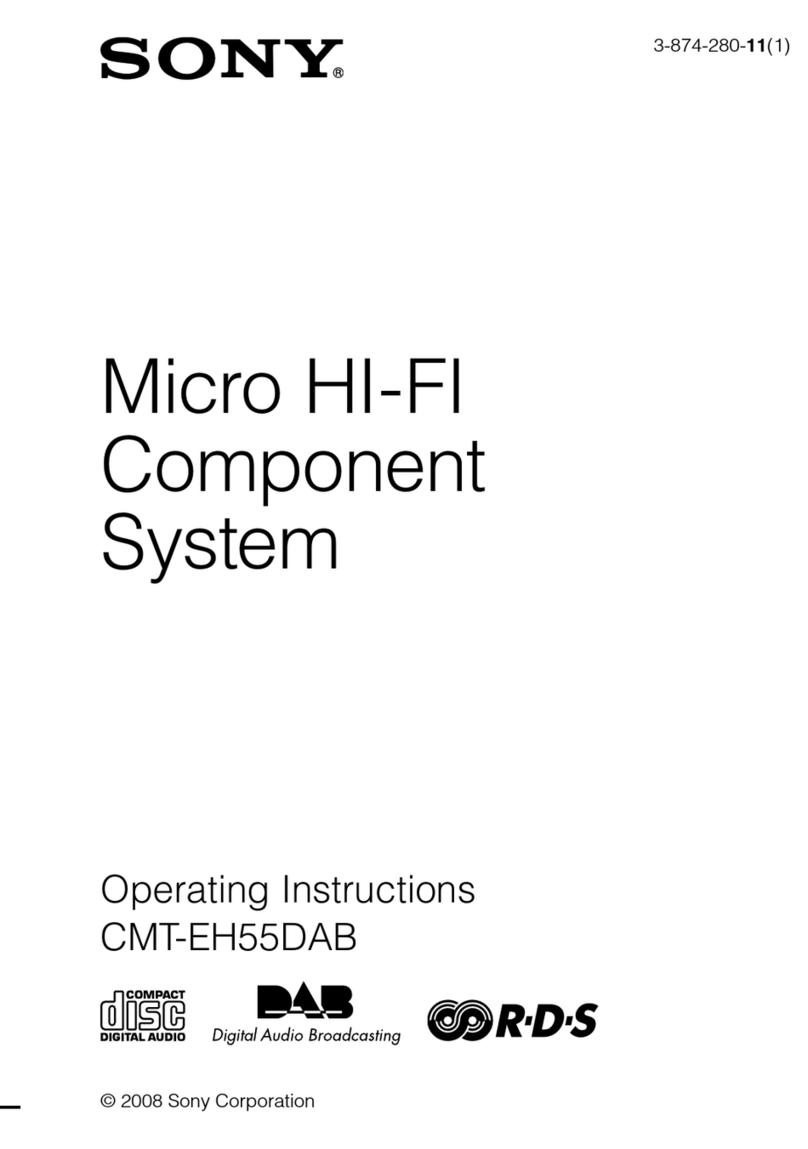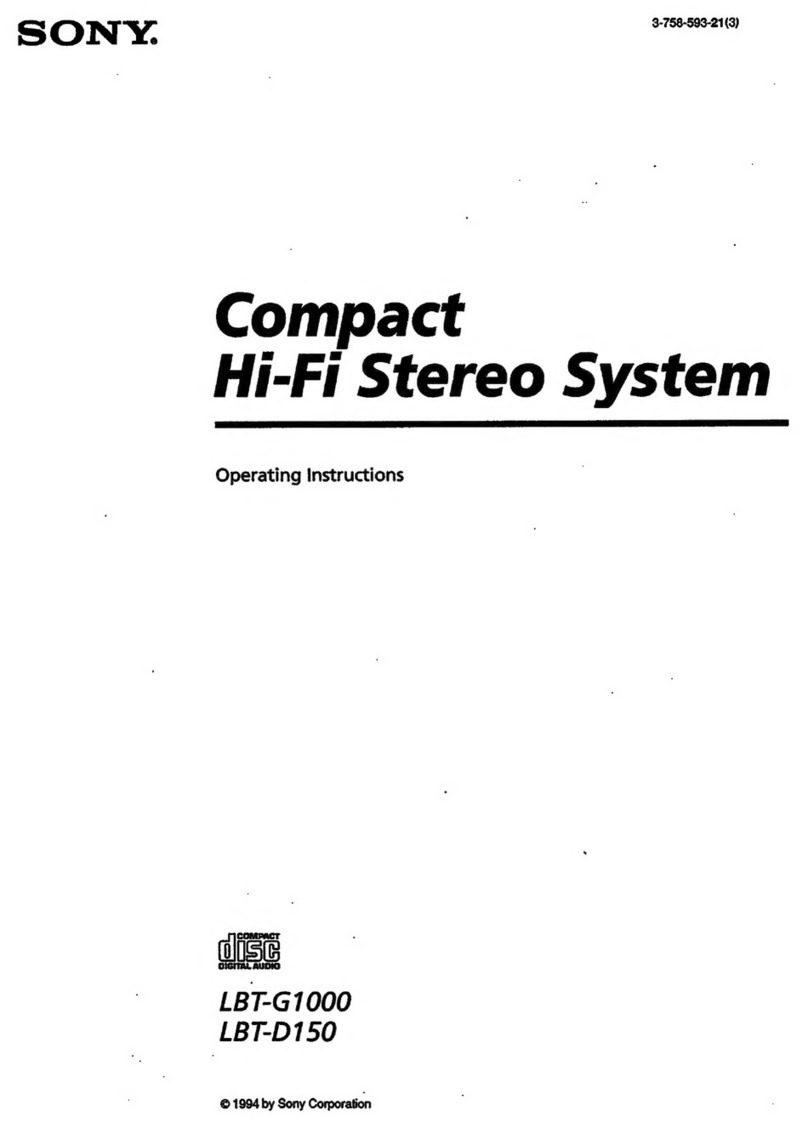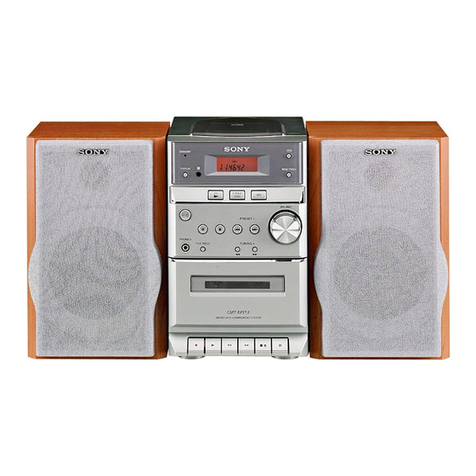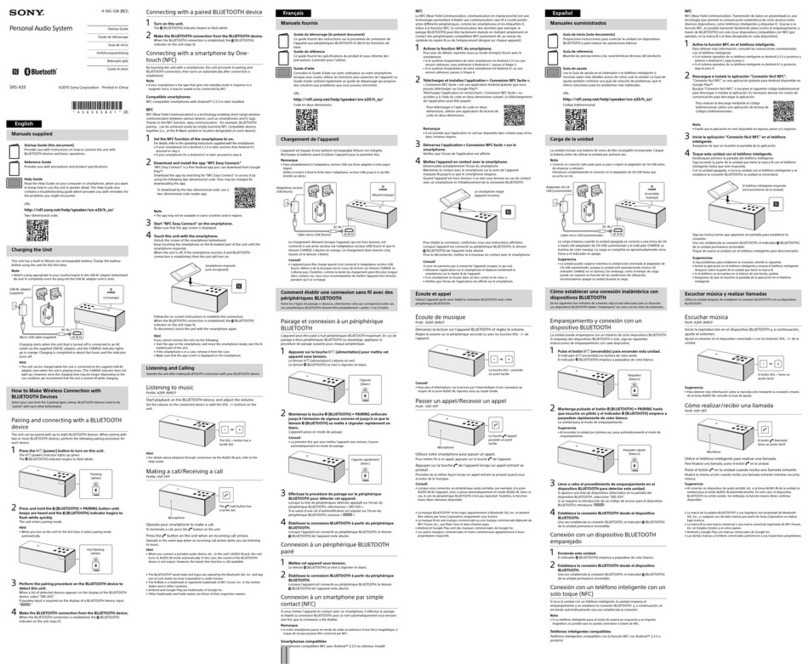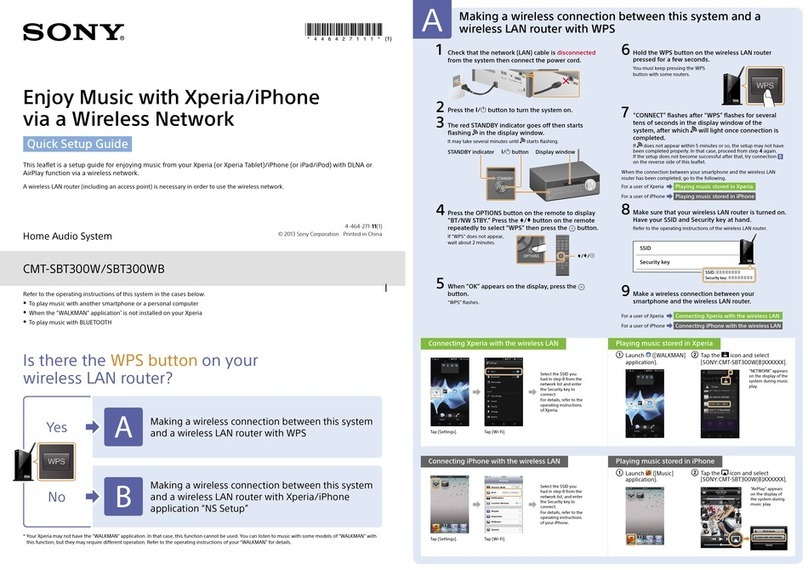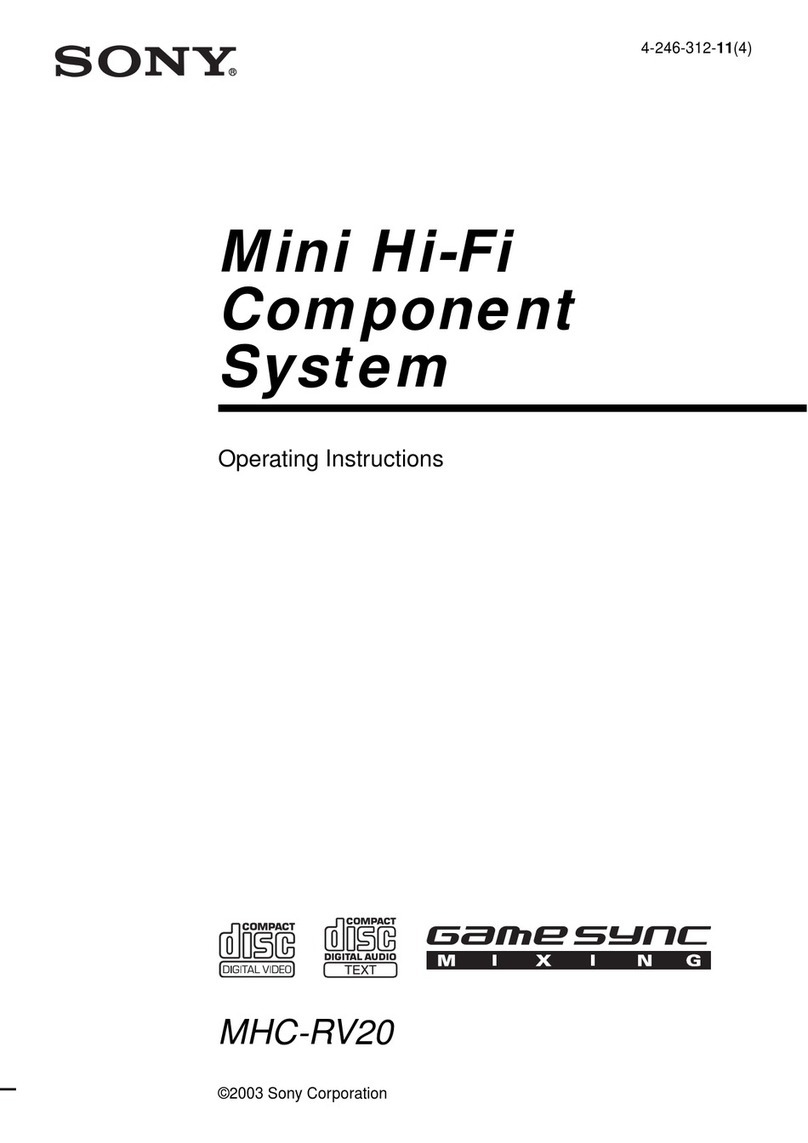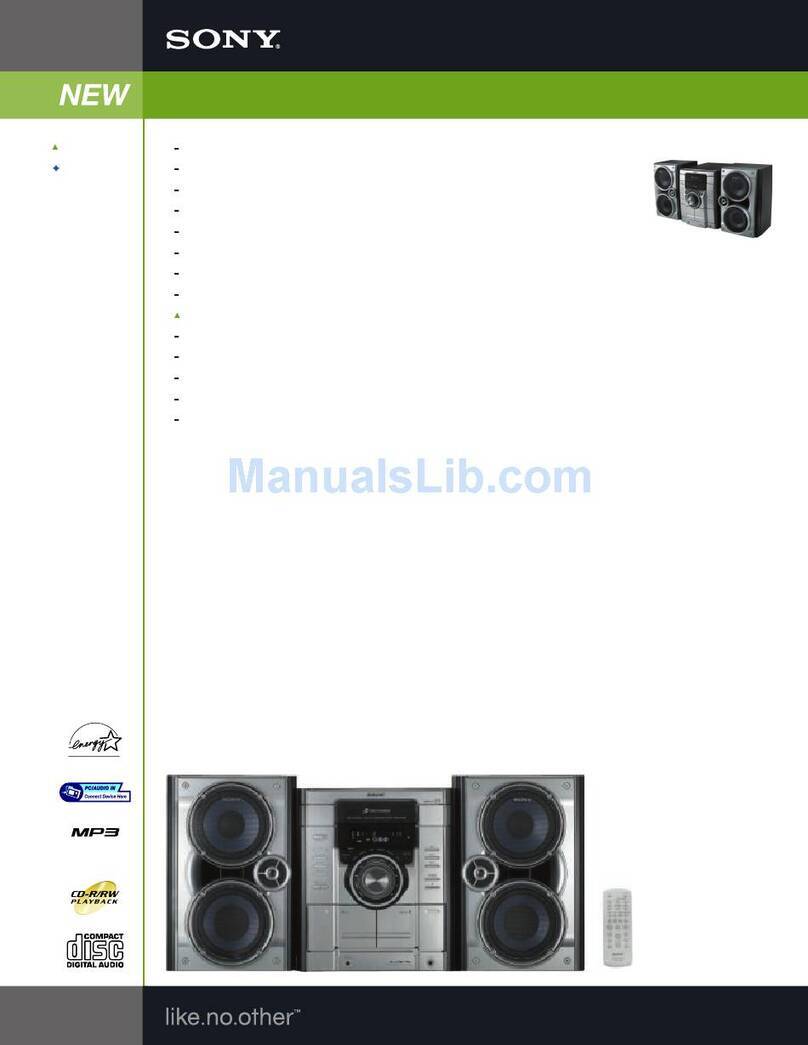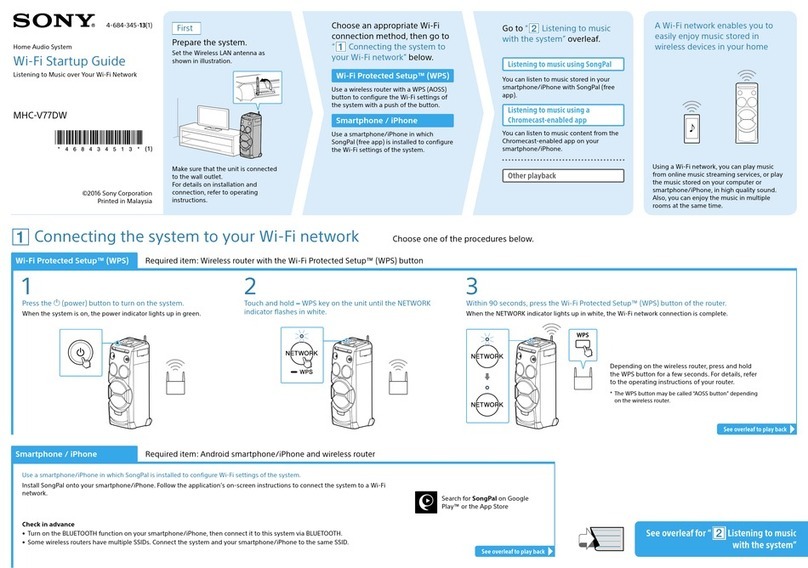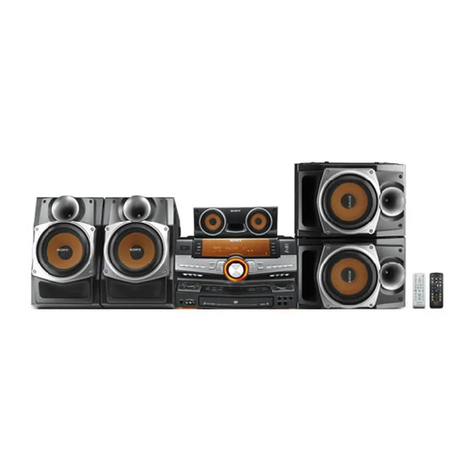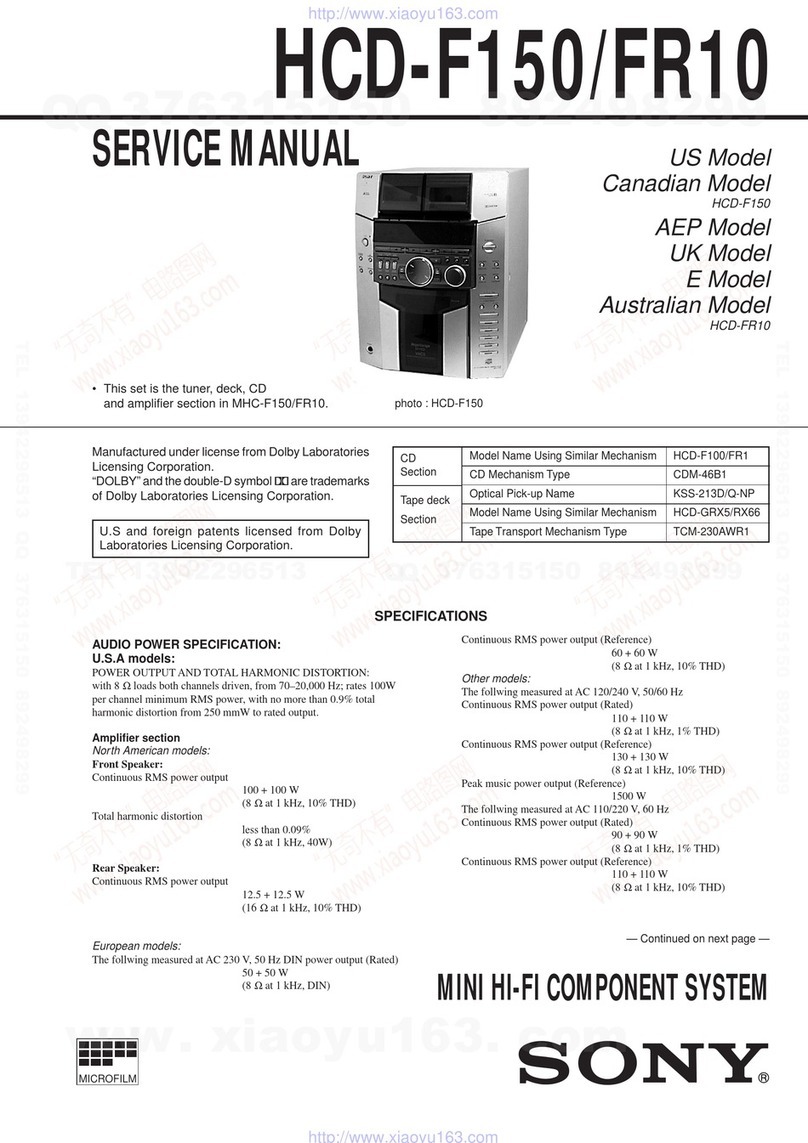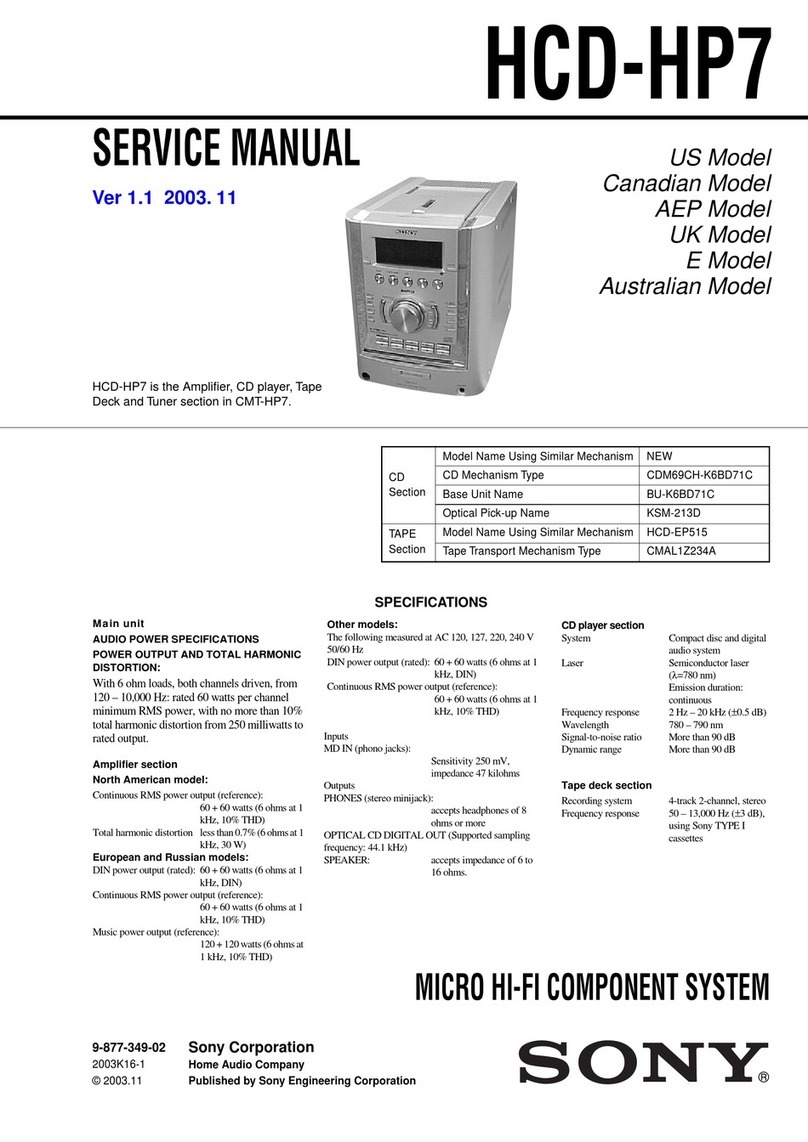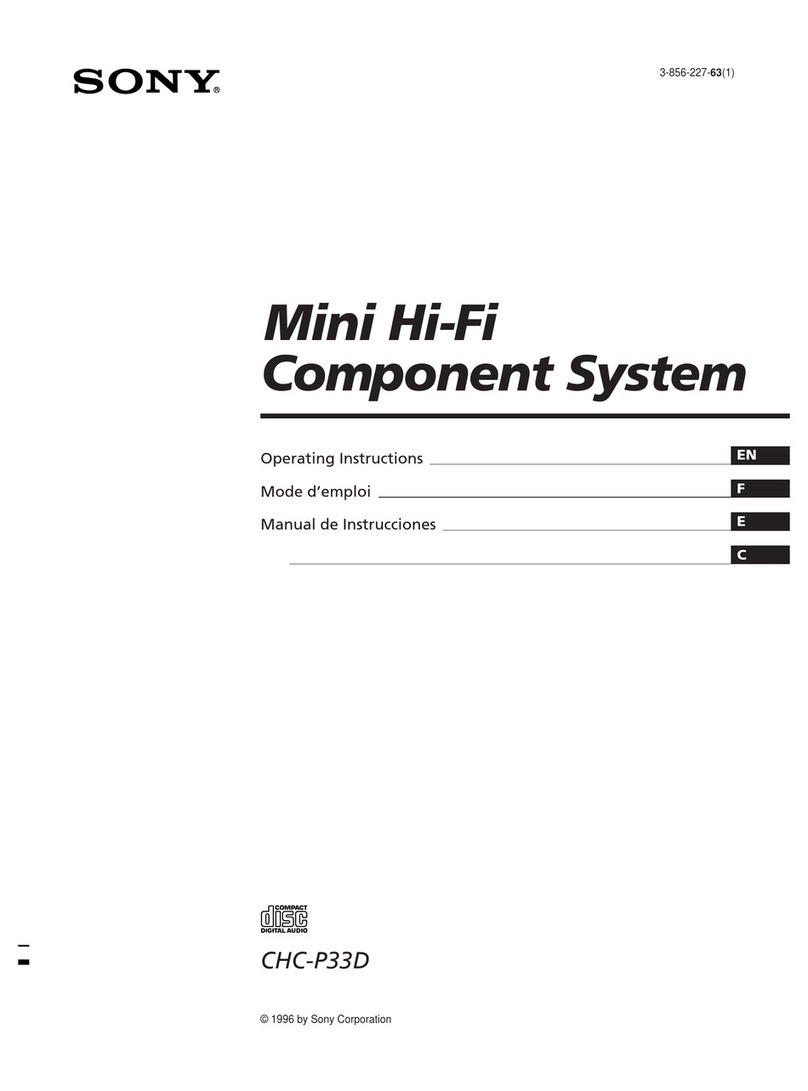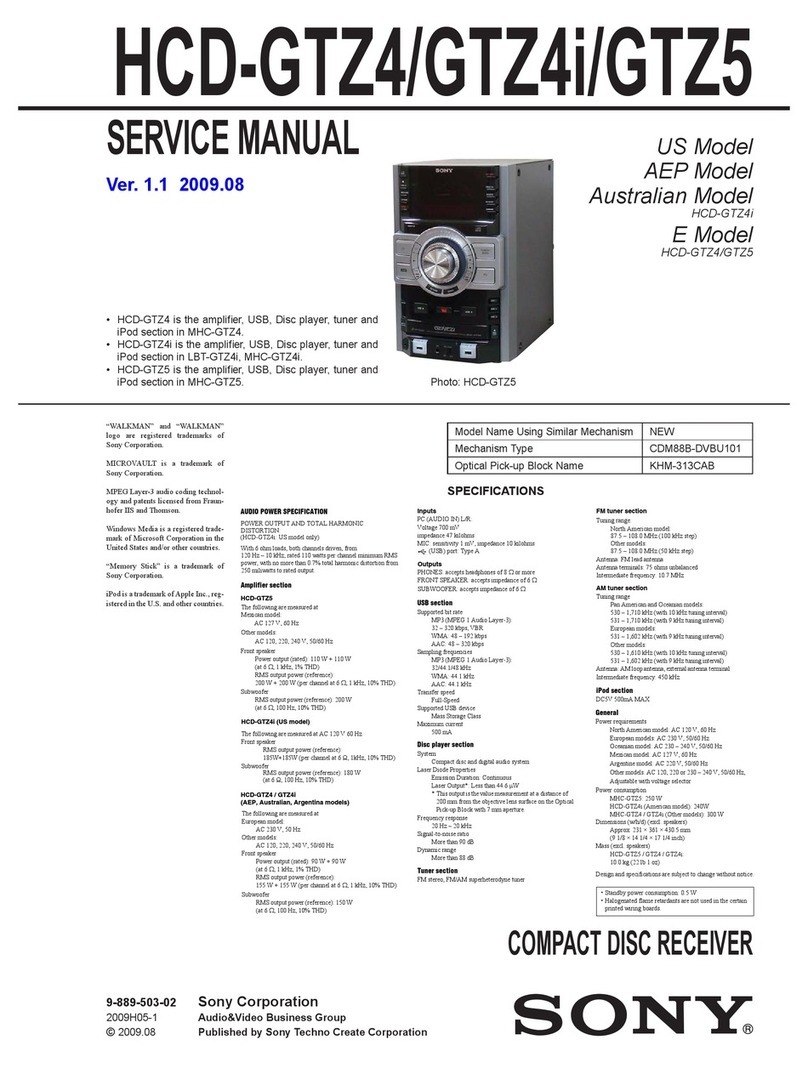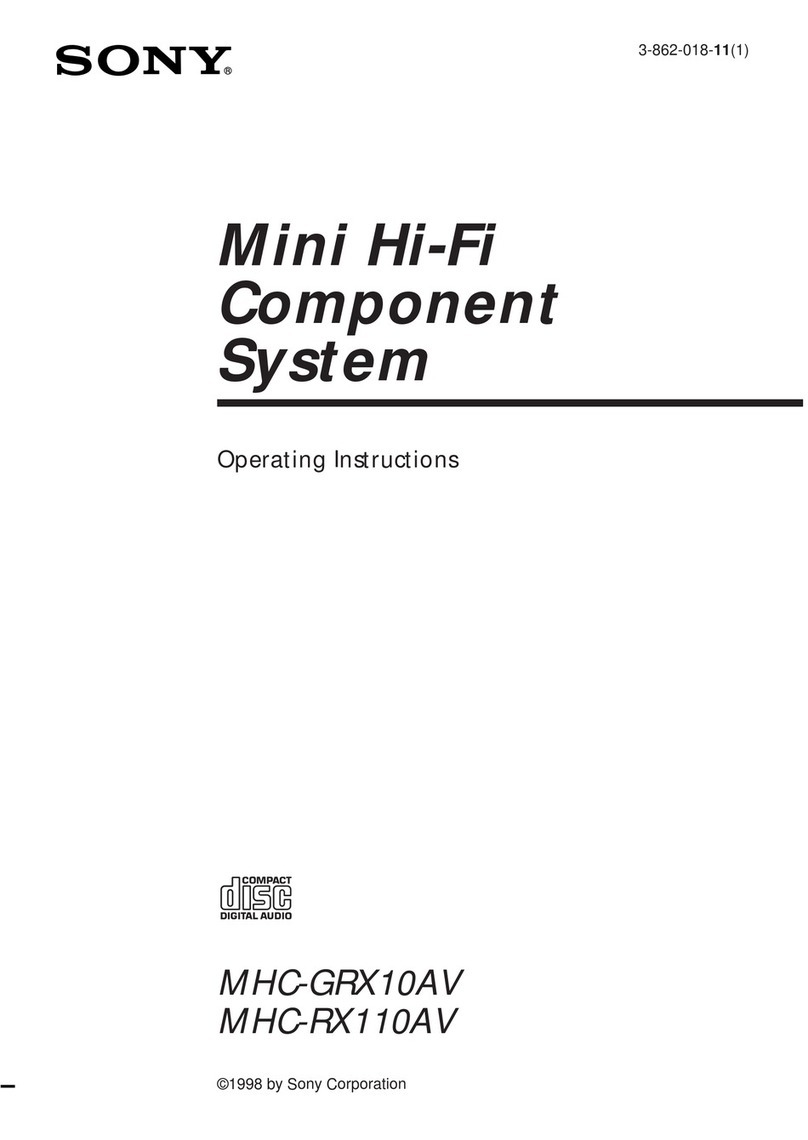
2
HCD-CP333
TABLE OF CONTENTS
General
Power requirements
North American model: 120 V AC, 60 Hz
European model: 230 V AC, 50/60 Hz
Other models: 110 - 120 V or 220 -
240 V AC , 50/60 Hz
Adjustable with voltage
selector
Power consumption
European model 70 W
0.4 W (at the power
saving mode)
Other models: 70 W
Dimensions (w/h/d) Approx. 225 ×273 ×
385 mm incl. projecting
parts and controls
Mass Approx. 7.3 kg
AM tuner section
Tuning range
North American model: 530 - 1,710 kHz
(with the tuning interval
set at 10 kHz)
531 - 1,710 kHz
(with the tuning interval
set at 9 kHz)
European model: 531 - 1,602 kHz
(with the tuning interval
set at 9 kHz)
Other models: 530 - 1,710 kHz
(with the tuning interval
set at 10 kHz)
531 - 1,602 kHz
(with the tuning interval
set at 9 kHz)
Antenna AM loop antenna, external
antenna terminal
Intermediate frequency 450 kHz
•Design and specifications are subject to change without notice.
1. SERVICING NOTES························································· 4
2. GENERAL············································································ 5
3. DISASSEMBLY·································································· 7
3-1. Cover (Upper) ································································· 8
3-2. Front Panel Section························································· 8
3-3. Tape Mechanism Deck-1 ················································ 9
3-4. Tape Mechanism Deck-2 ················································ 9
3-5. LED Board, CONTROL Board ···································· 10
3-6. Back Panel SubAssy, JACK Board ······························ 10
3-7. MAIN Board ································································· 11
3-8. POWER Board······························································ 11
3-9. CD Mechanism Deck (CDM63K-K6BD44) ················ 12
3-10.CD Board ······································································ 12
3-11.Base Unit (BU-K6BD44) ············································· 13
3-12.Tray Assy ······································································ 13
3-13.Silder (Loading)···························································· 14
3-14.TRAY SENSOR Board, MOTOR Board······················ 14
3-15.IN OUT SW Board ······················································· 15
3-16.Stocker Assy ································································· 15
3-17.CD Base Unit Assy, DISC SENSOR Board ················· 16
4.TEST MODE······································································ 17
5. ELECTRICAL ADJUSTMENTS································· 18
6. DIAGRAMS ······································································· 20
6-1. Note For Printed Wiring BoardsAnd Schematic
Diagrams······································································· 20
6-2. Block Diagrams ···························································· 21
6-3. Circuit Boards Location················································ 23
6-4. Printed Wiring Board – CD Board – ··························· 24
6-5. Schematic Diagram - CD Board -································· 25
6-6. Printed Wiring Board – TC Board – ····························· 26
6-7. Schematic Diagram – TC Board –································ 27
6-8. Printed Wiring Board – MAIN Board – ······················· 28
6-9. Schematic Diagram – MAIN Board (1/3) – ················· 29
6-10.Schematic Diagram – MAIN Board (2/3) – ················· 30
6-11.Schematic Diagram – MAIN Board (3/3) – ················· 31
6-12.Printed Wiring Board – CONTROL Section – ············· 32
6-13.Schematic Diagram – CONTROL Section – ················ 33
6-14.Printed Wiring Board – DRIVER Section – ················· 34
6-15.Schematic Diagram – DRIVER Section –···················· 35
6-16.Printed Wiring Board – POWER Board – ···················· 36
6-17.Schematic Diagram – POWER Board – ······················· 37
6-18.Printed Wiring Board – LCD Section – ························ 38
6-19.Schematic Diagram – LCD Section –··························· 38
6-20.IC Pin Function Description ·········································39
6-21.IC Block Diagrams ······················································· 41
7. EXPLODEDVIEWS························································ 44
7-1. Cover Section································································ 44
7-2. Front Panel Section······················································· 45
7-3. Chassis Section ····························································· 46
7-4. CD Mechanism Deck-1 ················································ 47
7-5. CD Mechanism Deck-2 ················································ 48
7-6. KSM-213D ··································································· 49
8. ELECTRICAL PARTS LIST········································· 50
Ver 1.1 2003.11
